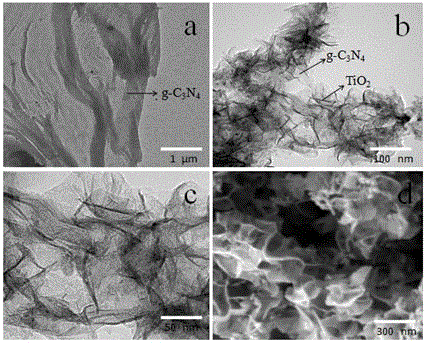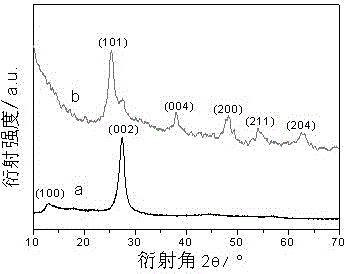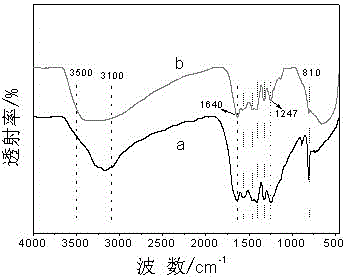Method of construction for photoelectrochemical glucose oxidase sensor with graphite like g-C3N4-TiO2 nanosheet composite as enzymatic molecule immobilization scaffold
A technology of g-c3n4-tio2 and glucose oxidase, which is applied in the field of photoelectrochemical enzyme sensor construction, can solve the problems of photogenerated charge hindering the application, and achieve the effects of promoting electron transfer, strong biocompatibility, and high sensitivity
- Summary
- Abstract
- Description
- Claims
- Application Information
AI Technical Summary
Problems solved by technology
Method used
Image
Examples
Embodiment 1
[0032] A graphite-like phase g-C 3 N 4 -TiO 2 The nano sheet composite material is the construction method of the photoelectrochemical glucose oxidase sensor of enzyme molecule immobilized support, and it comprises the following steps:
[0033] ①Graphite-like phase g-C 3 N 4 Preparation of:
[0034] Weigh 5.0 g of melamine powder into a crucible, then place the crucible in a muffle furnace, heat up to 550 °C at a heating rate of 5 °C / min, keep at 550 °C for 4 h, cool naturally to room temperature, and then Grind the yellow solid to powder to get g-C 3 N 4 powder;
[0035] ②g-C 3 N 4 -TiO 2 Preparation of composite materials:
[0036] 40 mg g-C 3 N 4 The powder was dispersed in 40 mL of isopropanol, ultrasonicated for 30 min, then 0.03 mL of diethylenetriamine was added and stirred for 5 min, then 1.8 mL of titanium isopropoxide was added, stirred evenly and transferred to 40 mL of polytetrafluoroethylene In the reactor, react at 200° C. for 24 h; after the reacti...
PUM
 Login to View More
Login to View More Abstract
Description
Claims
Application Information
 Login to View More
Login to View More - R&D
- Intellectual Property
- Life Sciences
- Materials
- Tech Scout
- Unparalleled Data Quality
- Higher Quality Content
- 60% Fewer Hallucinations
Browse by: Latest US Patents, China's latest patents, Technical Efficacy Thesaurus, Application Domain, Technology Topic, Popular Technical Reports.
© 2025 PatSnap. All rights reserved.Legal|Privacy policy|Modern Slavery Act Transparency Statement|Sitemap|About US| Contact US: help@patsnap.com



